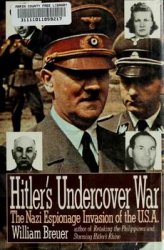The Soviet victory in the war called into question the future of the Karlovci Synod. On August 10, 1945, Patriarch Alexii approached its hierarchy with a query about their canonical legitimacy. He quoted the decrees of Patriarch Tikhon and his successor, the late Patriarch Sergii, concerning the Karlovci Synod and recalled their inhibition over its activity. Alexii’s criticism was especially sharp concerning the collaboration of Karlovci hierarchs with Nazi Germany. According to him, their betrayal was a direct result of the moral degradation of the Russian bishops in exile. Alexii linked the beginning of this degradation with the 1920s, when the Karlovci higher churchmen broke their episcopal oaths and leFt the jurisdiction of their mother church. In this way, their schismatic malfeasance naturally brought about their alliance with HitleR.6 In the end of his letter Patriarch Alexii warned that “an ecclesiastical tribunal, composed of high dignitaries of the Russian Orthodox Church, in agreement with all the Eastern Patriarchs, an agreement which they had communicated to us, wIll pronounce its final decision on those who reject the hand which the Mother Church stretches out to them for the last time.”7 This document pursued a twofold aim. On the one hand, it intended to intensify the crisis of the Karlovci hierarchy caused by the defeat of Nazi Germany. On the other hand, it had to present the Moscow Patriarchate as a true defender of the purity of Orthodoxy and its canons.
Meanwhile, the chairman of the Karlovci Synod, Metropolitan Anastasii, and Metropolitan Seraphim (Lade) found asylum in Munich. There they met “about twenty Ukrainian anD White Russian prelates, hundreds of priests and nearly a million laymen” who had moved to the British and American zones of Germany and Austria.8 By 1946, with American help, Anastasii began to build his church aneW.9 The Synod Abroad, as the Karlovci church leaders started to call themselves, focused its efforts on the so-called displaced persons who refused to return to the Soviet Union. The Church Times described these people as follows:
They are of different origins, views and sympathies: Ukrainians fTom the provinces of pre-war Poland incorporated into the USSR, White Russians from the same provinces, Balts, Cossacks, Caucasians and pure Russians, who left the USSR never to return. All these people live a precarious existence, and their future is sombre and uncertain.
Religion is the only consolation for these unfortunate displaced persons, and they practice it with a rare fervor. Little improvised chapels spring up in the camps and large congregations form. In the British zone there are already nineteen parishes and ten are in formation. A little band of religious monks from Slovakia set up a printing house in Hamburg and produced ten thousand Prayer Books, and other devotional literature. The head of this impromptu diocese, the Archimandrite Nathaniel of Lviv, speaks excellent English. In the American zone religious activity is even more pronounced.
It is centered in Munich, where Bishop Alexander Lovchii has a large building, which houses the church, secondary school and hospital. Austria has another similar diocese.10
The anti-Soviet drive of these people invigorated the ideological basis of the revived Karlovci Synod and determined its future line of development. On May 10, 1946, an episcopal conference, chaired by Metropolitan Anastasii, responded to Alexii’s offer for repentance and reunion with a decision to break all relations with the Moscow Patriarchate until the end of its alliance with the godless regime in Russia.11 At the same time, the emigre hierarchs assigned the entire responsiBility for the collaboration with Hitler to Metropolitan Seraphim (Lade) and excluded him fTom their church organizatioN.12 They also removed “Karlovci” from its name and adopted a new one: Synod Abroad.
SeeinG this metamorphosis, the Moscow Patriarchate exerted pressure on the Orthodox patriarchs in the Middle East to suspend their relations with Metropolitan Anastasii and his fellow bishops.13 According to the CAROC, the Synod Abroad was the main cause of failures in the Moscow Patriarchate’s reunion policy in China and the United States in 1946. In the beginning of 1947, Karpov stIll thought that there were opportunities to ruin the Karlovci SynoD.14 The Cold War, however, strengthened its positions. Metropolitan Anastasii removed the suspension on the head of the Latvian Orthodox Church in exile, Metropolitan Augustins, imposed by the late Patriarch Sergii. In a short time, Anastasii spread his jurisdiction over other continents: An emigre bishop was appointed to adminIstrate the Orthodox Russians in Australia, and several bishops from the Russian Metropolia in America left the jurisdiction of Metropolitan Theophil and moved under that of Anastasii. ' 5 WHile in Munich, the Synod Abroad succeeded in setting up its own structures on the territory of the Western European Russian Exarchate of the Ecumenical Patriarchate. This drive to cover all the Russian communities outside the Soviet Union reflected the changed name of its organization, which became known as the “Russian Orthodox Church outside Russia,” or ROCOR. This name was adopted in 1950, when Metropolitan Anastasii moved to America. In this way, his church became the major rival of the Moscow Patriarchate for the heritage of the prerevolutionary Russian Orthodox Church in the Cold War period.




 World History
World History









